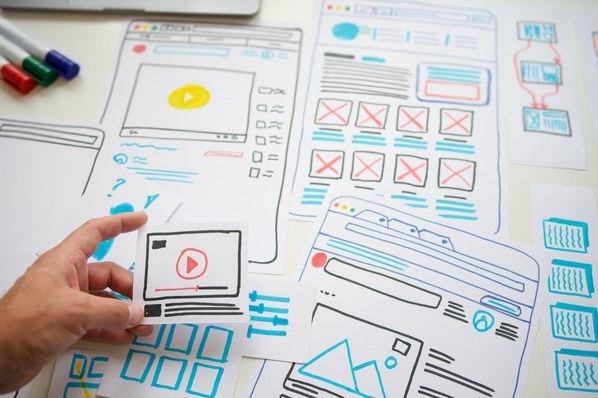Psst! If you want a refresher on wireframe basics, I discuss everything you need to know in this beginner’s guide.
Table of Contents
- What Is Fidelity in Web Development?
- Components of a Wireframe
- Low-Fidelity Wireframes
- Medium-Fidelity Wireframes
- High-Fidelity Wireframes
- Building My Own Wireframes
- Wireframe Examples
Since a wireframe is a simple representation of the finished product, it requires minimal styling, graphics, and color. You can also draw your wireframes or create them digitally.
However, even though it’s not the final product, a wireframe could (and should) contain many necessary details.
Components of a Wireframe
Your project’s specific needs determine the kind of wireframe you create and the wireframe tools you’ll use.
Irrespective of your project, here are some components that make up every wireframe.
Page Layout
The page layout defines the structure of visual elements on the page. It ensures that your design is consistent and organized.
Content Hierarchy
Content or visual hierarchy depicts how content will appear on your website or application based on its importance. Typically, the page starts with H1 tags, followed by H2 tags, and so forth.
Content Areas
Content areas or placeholders show where content like texts, videos, logos, and others will be on the page. These content areas don’t necessarily need to house the specific content that’ll be in that area yet.
Navigation Menus
The navigation menus show how users are expected to move around your design page. These menus include elements like footers, links, menus, buttons, and so on.
Next, I’ll review the three major types of wireframes: low fidelity, medium fidelity, and high fidelity.
Low-Fidelity Wireframes
A low-fidelity wireframe is a skeleton of a digital screen, web page, or application. It’ll have the bare-bones elements that will be included in the finished project. Low-fidelity wireframes give designers and programmers an idea of where images, text, buttons, and interactive elements might be placed.
They might be hand-developed as quick sketches or created in a wireframe tool like Figma or Sketch.
When should you use low-fidelity wireframes?
1. You’re at the very beginning of the design process.
Using low-fidelity wireframes is a good idea if you’re just starting a new design. Since low-fidelity wireframes are sketches drawn by hand with ink and paper, you might consider them rough drafts. It probably won’t be the final wireframe you create, but it is a great place to start.
Pro tip: I recommend creating several low-fidelity wireframes to explore a concept and receive feedback from different stakeholders before moving on to a more detailed design.
2. You have a lot of wireframes to create.
If your project has a huge scope of work, you probably don’t have a lot of spare time to spend on detailing every wireframe you’ll need to create. Start with low-fidelity wireframes for most pages, and then add more detail to the wireframes that need more clarity.
3. You need to complete a project quickly.
If you have a lot of wireframes to create, you’ll need to work quickly to keep a project moving along. However, you may have other reasons for creating wireframes on the fly. If inspiration strikes, you may want to sketch out what you’re thinking about at the moment rather than trying to remember it later.
Medium-Fidelity Wireframes
A medium-fidelity wireframe is a step up from its low-fidelity counterpart. Medium-fidelity wireframes will have more detail — including accurate spacing, headlines, and buttons. They might even be displayed together in a sequence called a wireflow that shows precisely how the web pages will work together.
Medium-fidelity wireframes are usually created in a wireframing tool for more accuracy, precision, and detail.
When should you use medium-fidelity wireframes?
Using medium-fidelity wireframes is a good idea for creating a wireframe map or working through multiple design steps before designing a fully functional prototype.
Below are some additional use cases for medium-fidelity wireframes.
1. You’re putting a wireframe map together.
A wireframe map combines a visual sitemap with wireframes for each page. These maps are created to be comprehensive roadmaps for the development process.
Although you’d be creating several wireframes, I don’t recommend low-fidelity ones because they don’t offer enough detail and clarity to be followed. It’s best to create medium-fidelity wireframes in this case, which can be done relatively quickly but will still be easy to understand when others follow the wireframe map later.
2. It's the next step in a comprehensive design process.
If your project has the time and budget, medium-fidelity wireframes are the next iteration after low-fidelity wireframes are established. Adding a bit more to your wireframes will further develop your design ideas.
High-Fidelity Wireframes
A high-fidelity wireframe is a realistic prototype closely resembling a project's final design. It can include typography, colors, images, icons, and CTA buttons. These wireframes take longer than low- and medium-fidelity ones, so you’d need to allocate more resources to complete them.
Because they require a high level of detail, digital tools are typically used to create high-fidelity wireframes.
Pro tip: High-fidelity wireframes should be reserved for projects approved by all stakeholders and cleared for production.
When should you use high-fidelity wireframes?
1. At the end of the design process.
You should only create high-fidelity wireframes once you know exactly what your design needs to look like based on multiple drafts at lower fidelity.
The changes made to high-fidelity wireframes should be visually minor (adding colors, photos, and branding), and the functionality should come to the forefront of the design conversation.
2. You need to test complex user interactions.
High-fidelity wireframes make it easier to communicate the various qualities of the product. More detail allows for more accurate judgment of the user interface (UI) elements. Rather than simply showing the product’s form, they illustrate its function so you can spot strengths and weaknesses.
3. You have the budget.
High-fidelity wireframes tend to consume a lot of design time and will be more expensive to produce. If you’re working with a designer and have the budget, this shouldn’t be an issue — so long as you’ve gained the approvals necessary to move forward.
4. You’re working with a partner you want to impress.
Creating a high-fidelity wireframe will demonstrate your professionalism as you help a partner (like a potential investor) clearly understand the problem the project is intended to solve.
A high-fidelity wireframe also gives this third party a better visualization of the final product. It shows them that you’ve adequately addressed all the nuances required to create a functional and on-brand design while also helping you explain how it will work.
However, don’t create a high-fidelity wireframe from the get-go. As you’ve learned, a medium-fidelity wireframe will be less limiting and time-consuming as a first pass with a partner you want to impress. But, wowing them with a high-fidelity wireframe earlier rather than later can certainly work to your benefit.
5. You have the time.
High-fidelity wireframes are worth the time and cost necessary for production because they can help you make a better final product. They ensure that you can get everything you want with a few iterations to the design once it's in production.
Aside from that, getting to a high-fidelity wireframe typically means you’ve received input from various users with varied expertise.
However, high-fidelity wireframes are time-consuming (between design meetings and the actual process of creating them) and may not be feasible for projects with short timelines and budgets.
6. You’re working on your own personal project.
Of course, it’s important to invest your full abilities into work done on behalf of an employer. However, most people are willing to put much more unpaid effort into a personal project.
The extra time you input can be crucial to the success of your project if you will be using your wireframe to attract interest from investors.
If you want to convince someone else to give you funds to move forward in the development process, you will need a visual (if not a functional prototype) to fully illustrate your product’s potential. You can skip the collaborative drafting phase if you don’t need to convey your vision to anyone else.
Building My Own Wireframes
So, you want to build a wireframe but need help figuring out how to go about it? That’s why I’m here. I’ll show you my process for creating a low-, medium-, and high-fidelity wireframe for a sample business website.
Start With Research
Before designing anything, you must understand what you’re building and for whom. Who is the audience going to use the product? And how do you expect them to use it?
For me, I want to build an ecommerce website selling shoes. I expect they’d like pictures of the shoes alone and on models for reference.
Pro tip: To make it more accurate, sample opinions from your core audience. You can use HubSpot’s Research Kit to get started.
Gather Inspiration
In his book Steal Like an Artist, Austin Kleon writes, “Every new idea is just a mashup or a remix of one or more previous ideas.”
As a designer, you can borrow — not steal — ideas from other creators. See what they’ve done and how well it works. Then, adapt it to your project and audience.
I checked sites like Dribbble and Behance for inspiration.
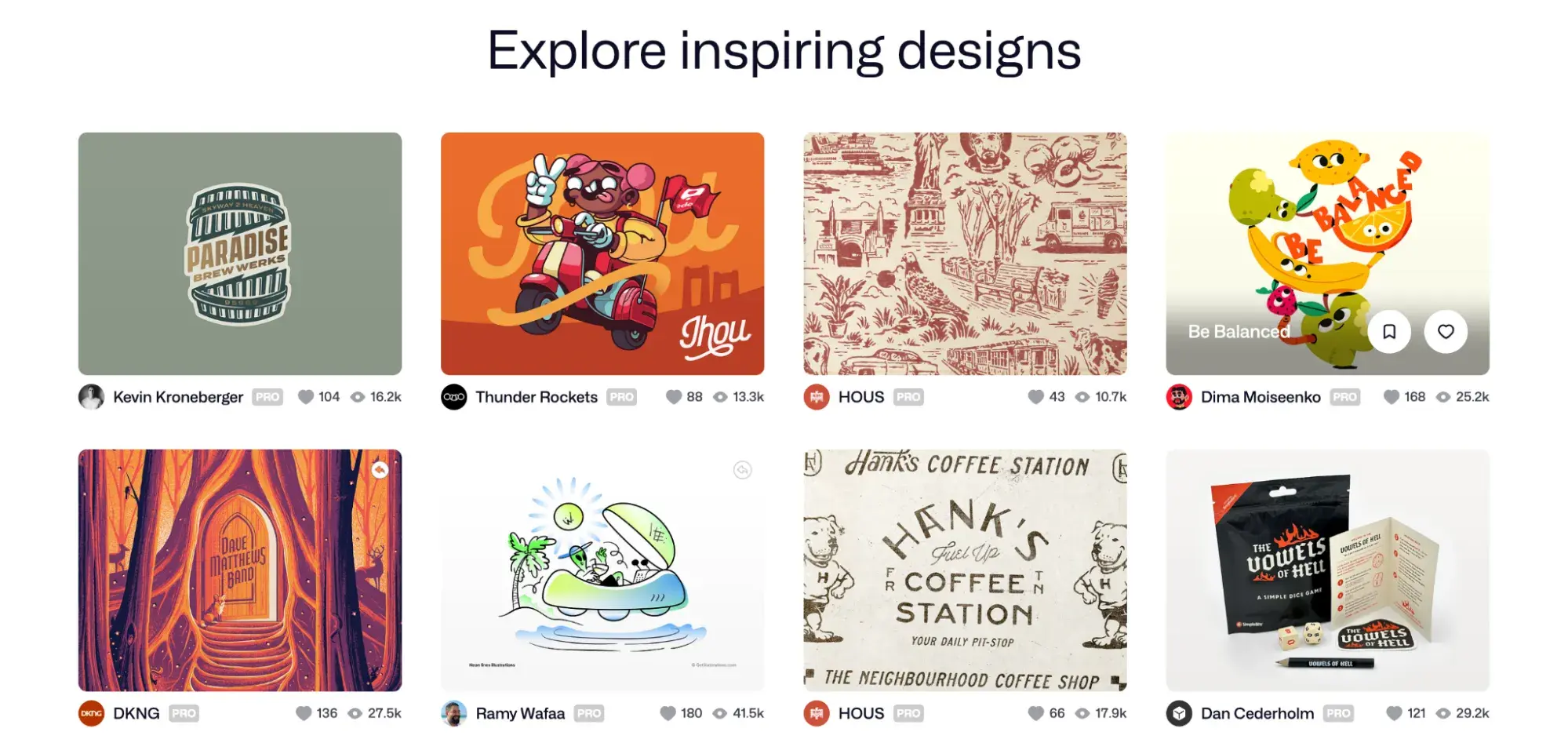
Creating a Low-Fidelity Wireframe
Since I’m building a low-fidelity wireframe for a website, I chose to draw the site’s homepage using a pen and paper — nothing too fancy.
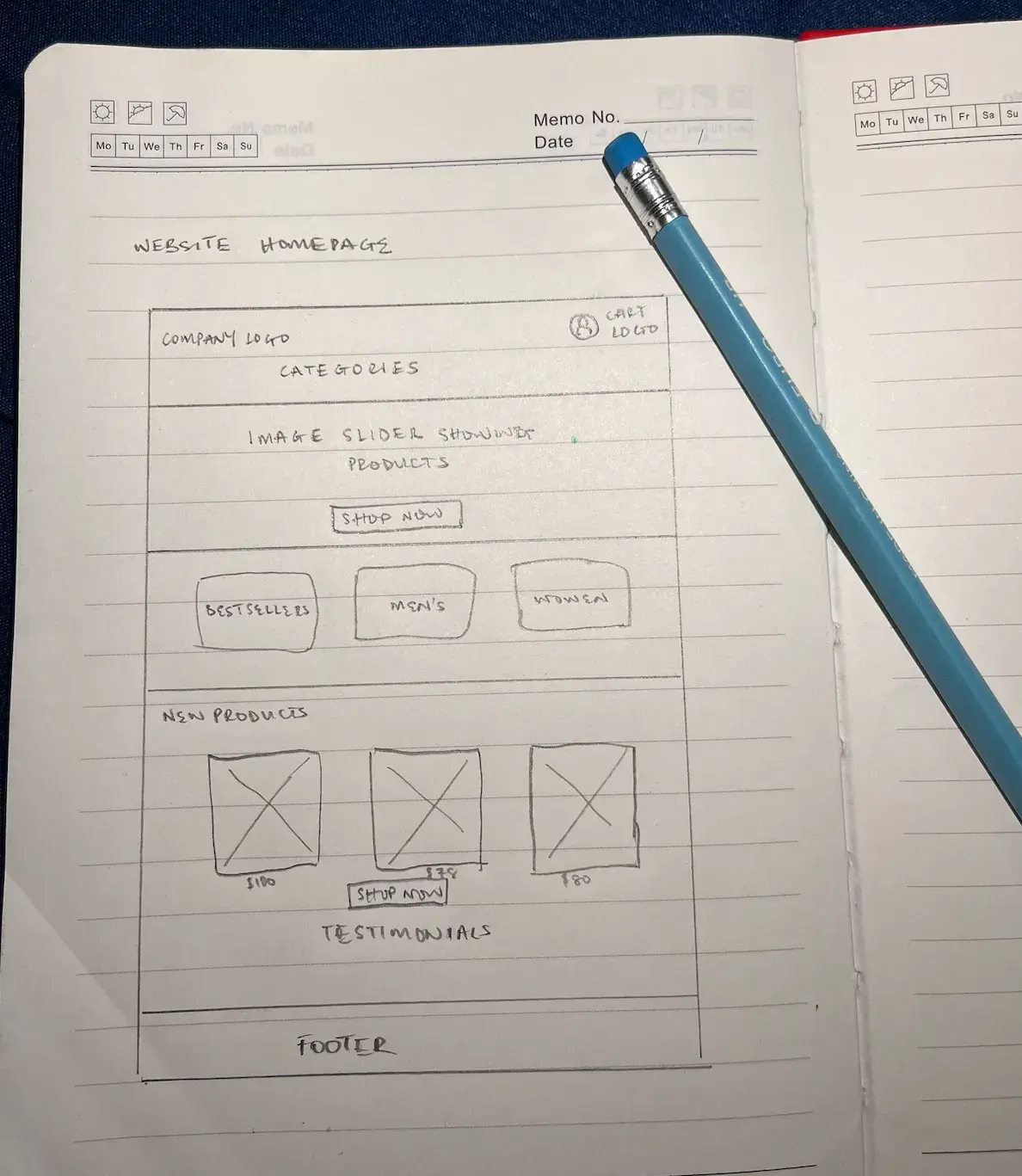
It’s simple, straightforward, and contains what you need from a business website at a high level.
There isn’t much going on on the visual side of things, but this low-fidelity wireframe provides structure and can help stakeholders know what to expect.
Creating a Medium-Fidelity Wireframe
The next step is to give my pen-and-paper sketch more structure. I created this medium-fidelity wireframe using Canva.
This wireframe contains more elements and media that depict how the final design will look.
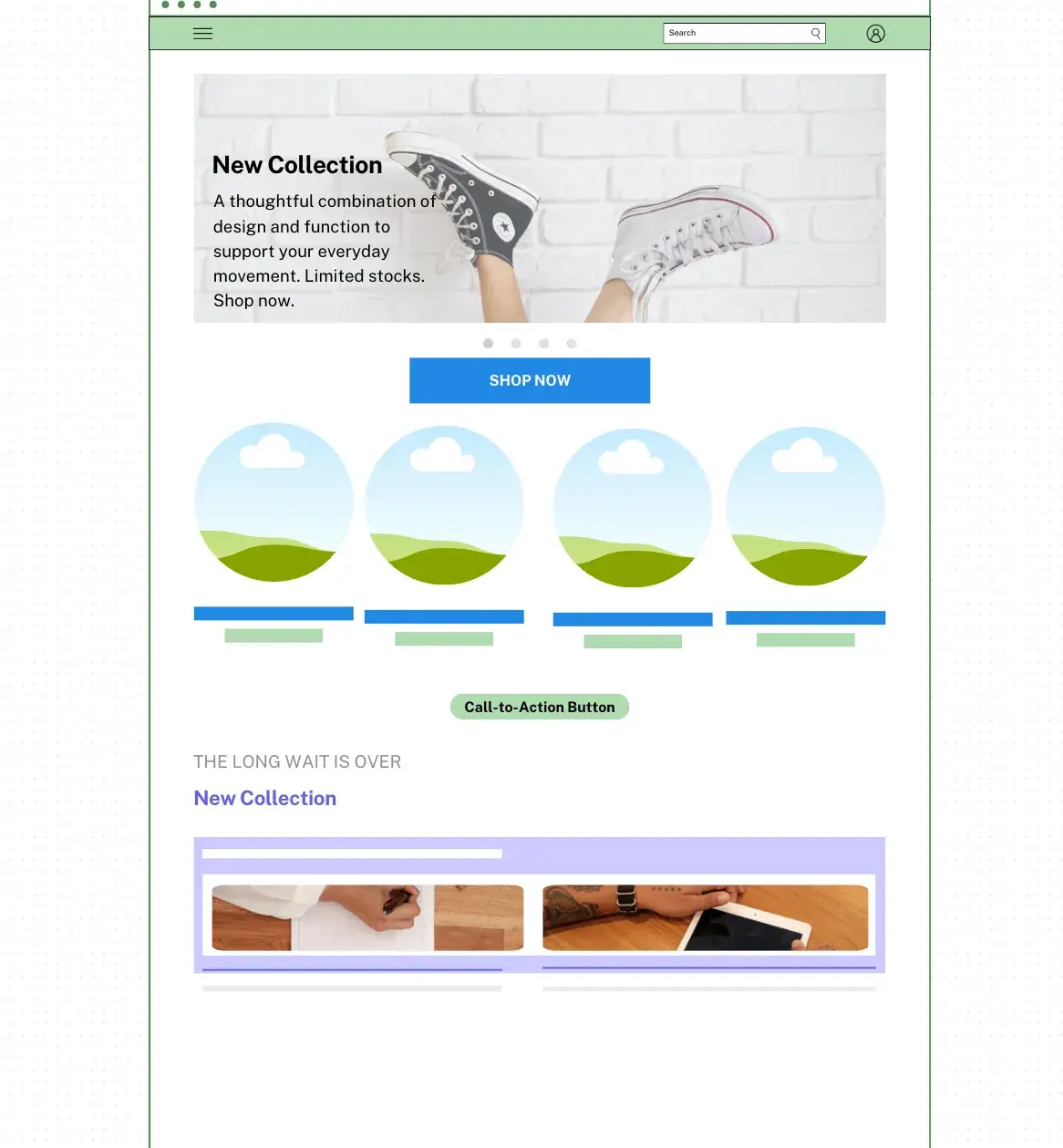
Canva comes with templates you can adapt to meet your needs, so creating this medium-fidelity wireframe wasn’t too challenging.
Creating a High-Fidelity Wireframe
To create a high-fidelity wireframe, you’ll definitely need to use a software tool.
As I mentioned above, it’s more of a lengthy and time-consuming process than the other lighter-lift wireframe examples I’ve discussed, but you’ll have a great pro-level wireframe when you’re done.
The other good news is that there are a ton of great tools out there to help you with creating your high-fidelity wireframe. You can peruse our list of wireframe tools here, try them out, and pick the one that suits your liking.
Wireframe Examples
Here are a few wireframe examples that demonstrate their role in the design process.
Low-Fidelity Wireframe Examples
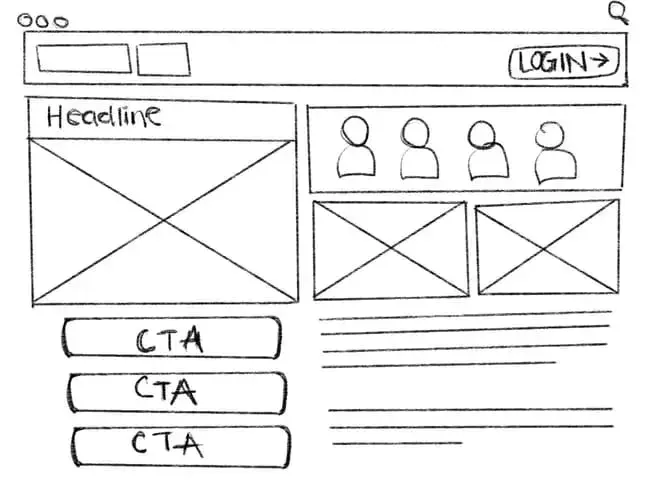
Low-fidelity wireframes are often hand-drawn. It’s an easy, fast way to get ideas in your head into a format others can see. There are also digital tools like Justinmind’s Sketching UI Kit that can help you quickly create clean, low-fidelity wireframes.
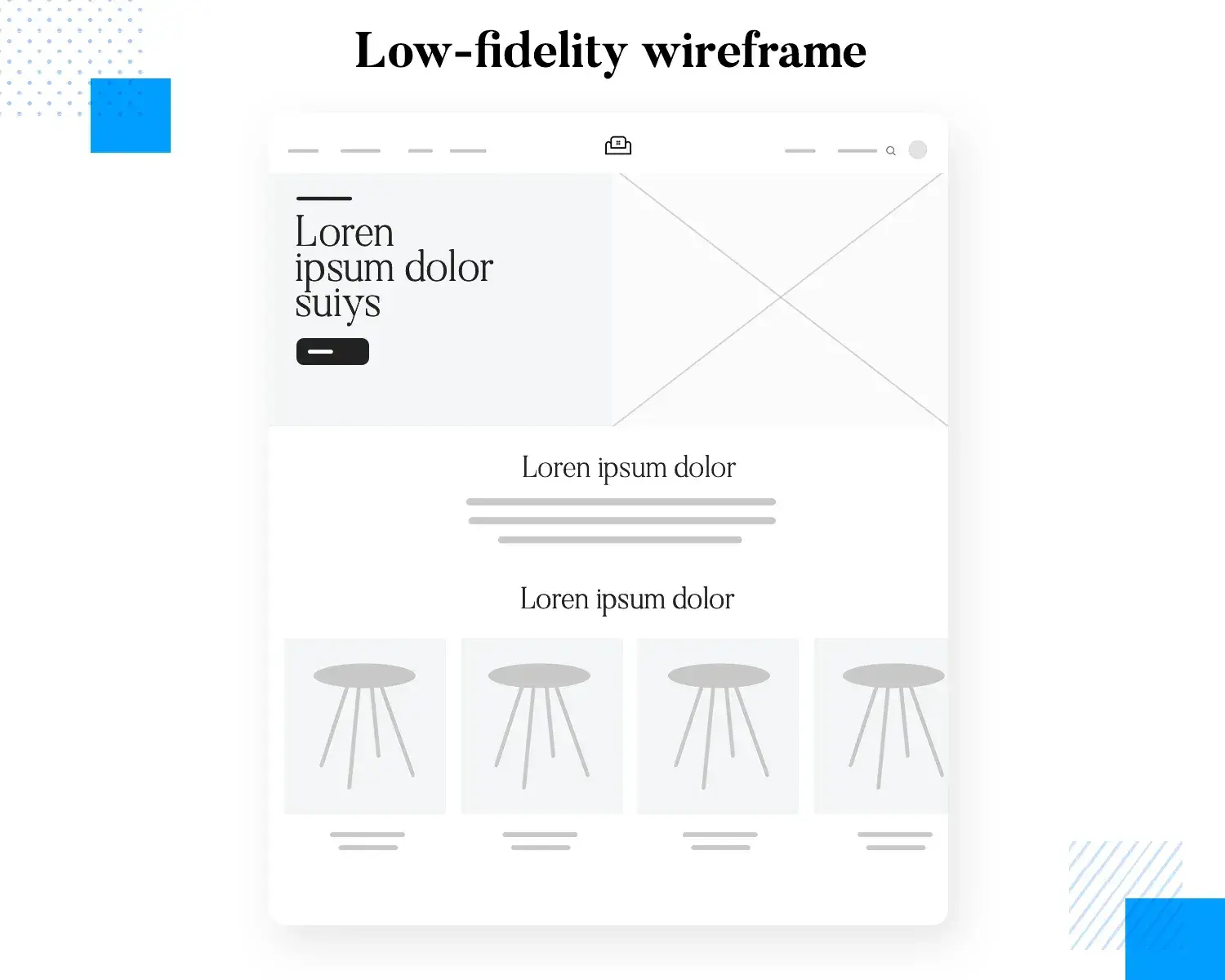
Medium Fidelity Wireframe Examples
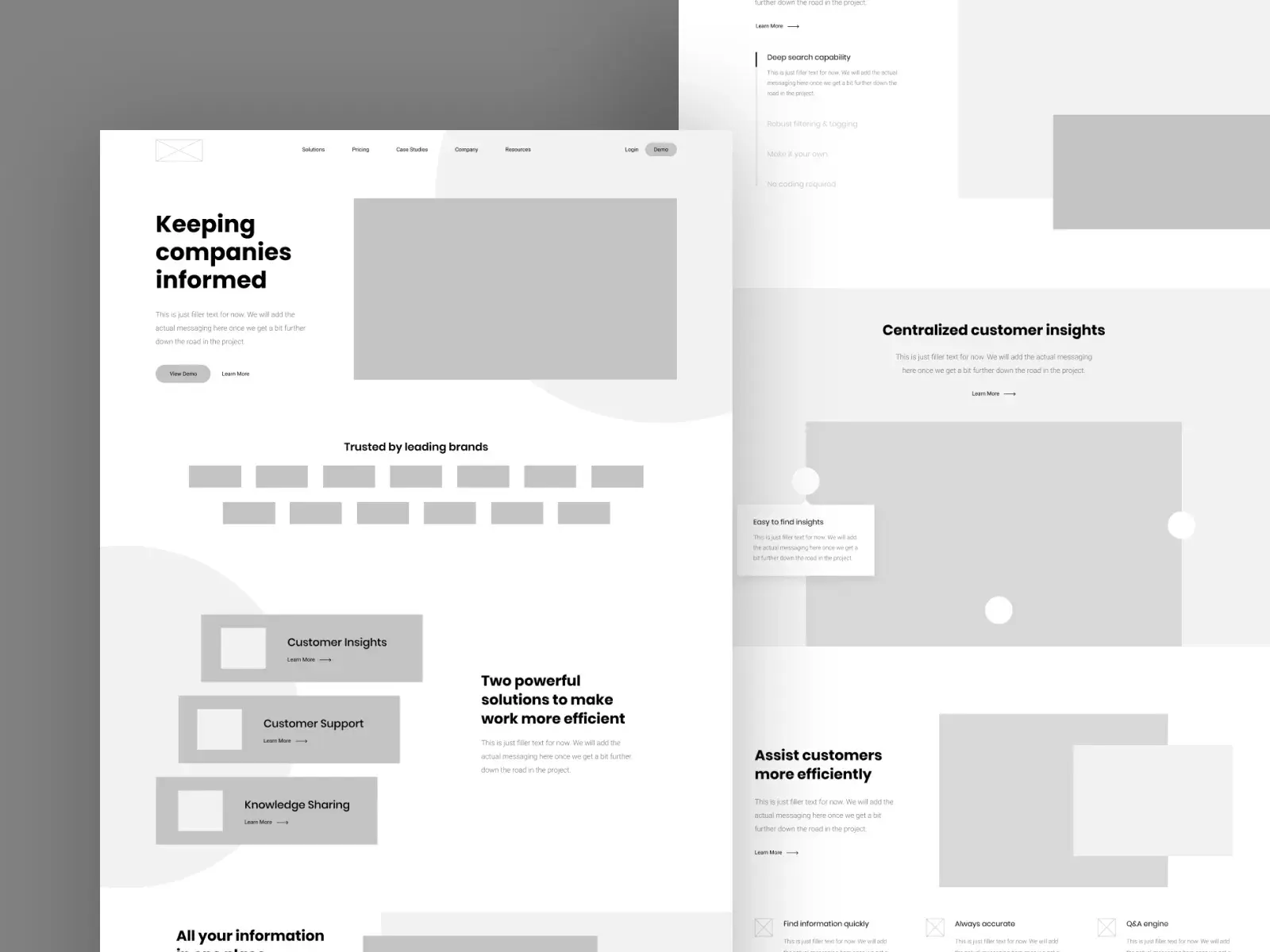
A bit more complicated than a sketch, medium-fidelity wireframes start to flesh out the full design but aren’t so detailed that they feel inflexible.
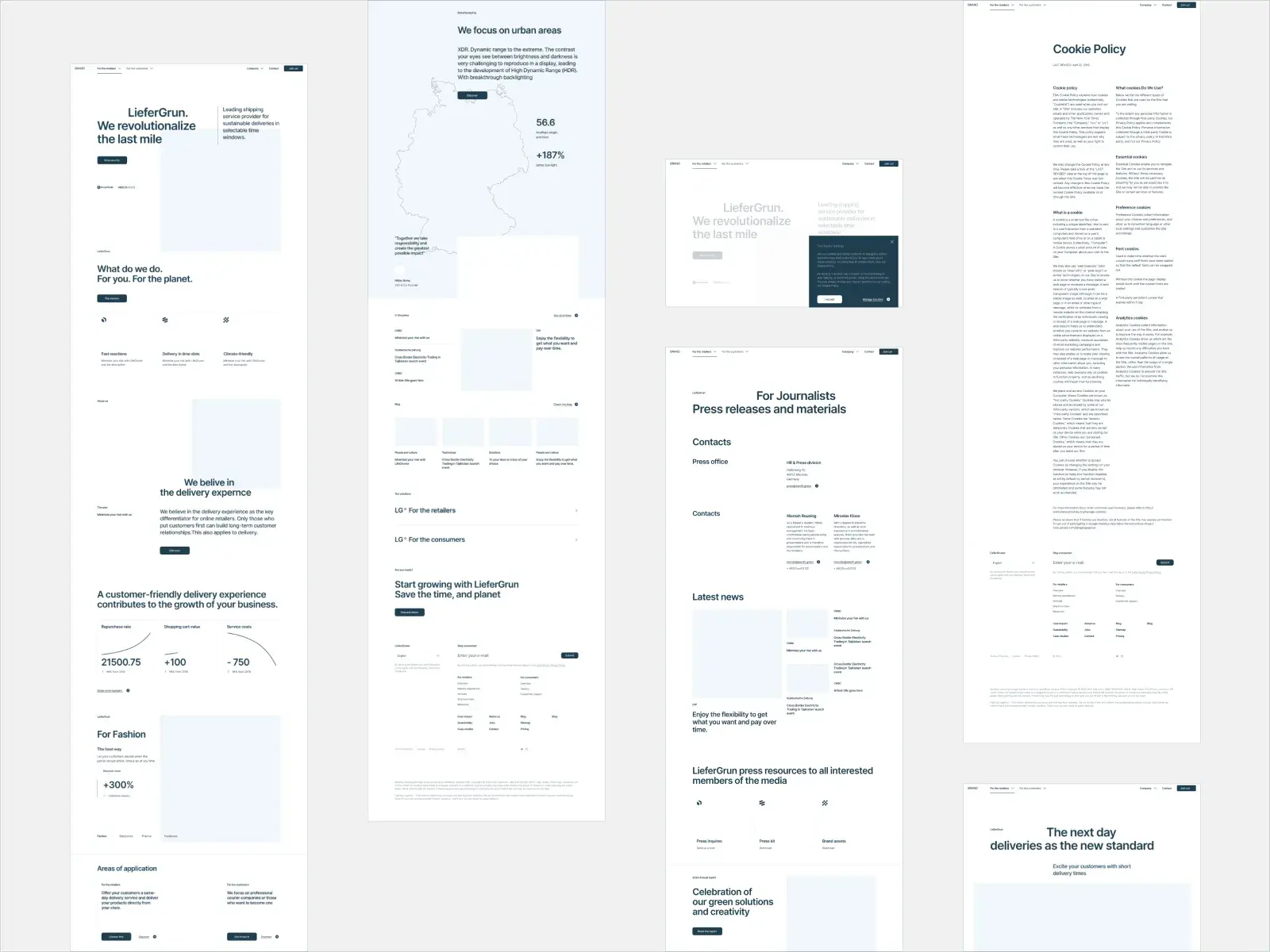
If you need to create a lot of wireframes, medium-fidelity wireframes will save time while clearly conveying a design for each page or screen.
High-Fidelity Wireframe Examples
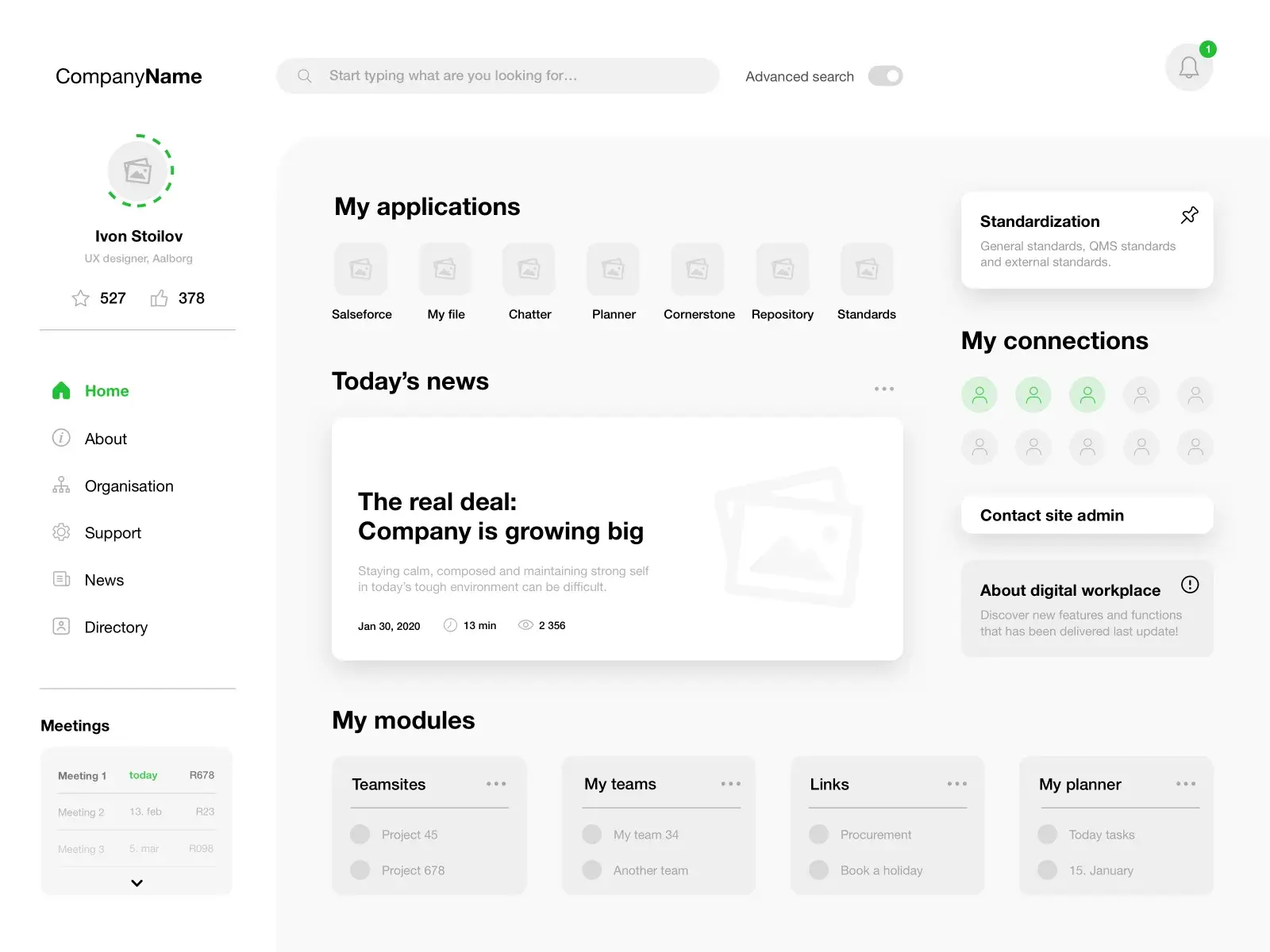
[alt example of high-fidelity wireframe
This wireframe is a template example, but you can see that it incorporates colors and fonts and is more complex than a medium-fidelity wireframe. High-fidelity wireframes incorporate color, photos, and branding in this final design stage.
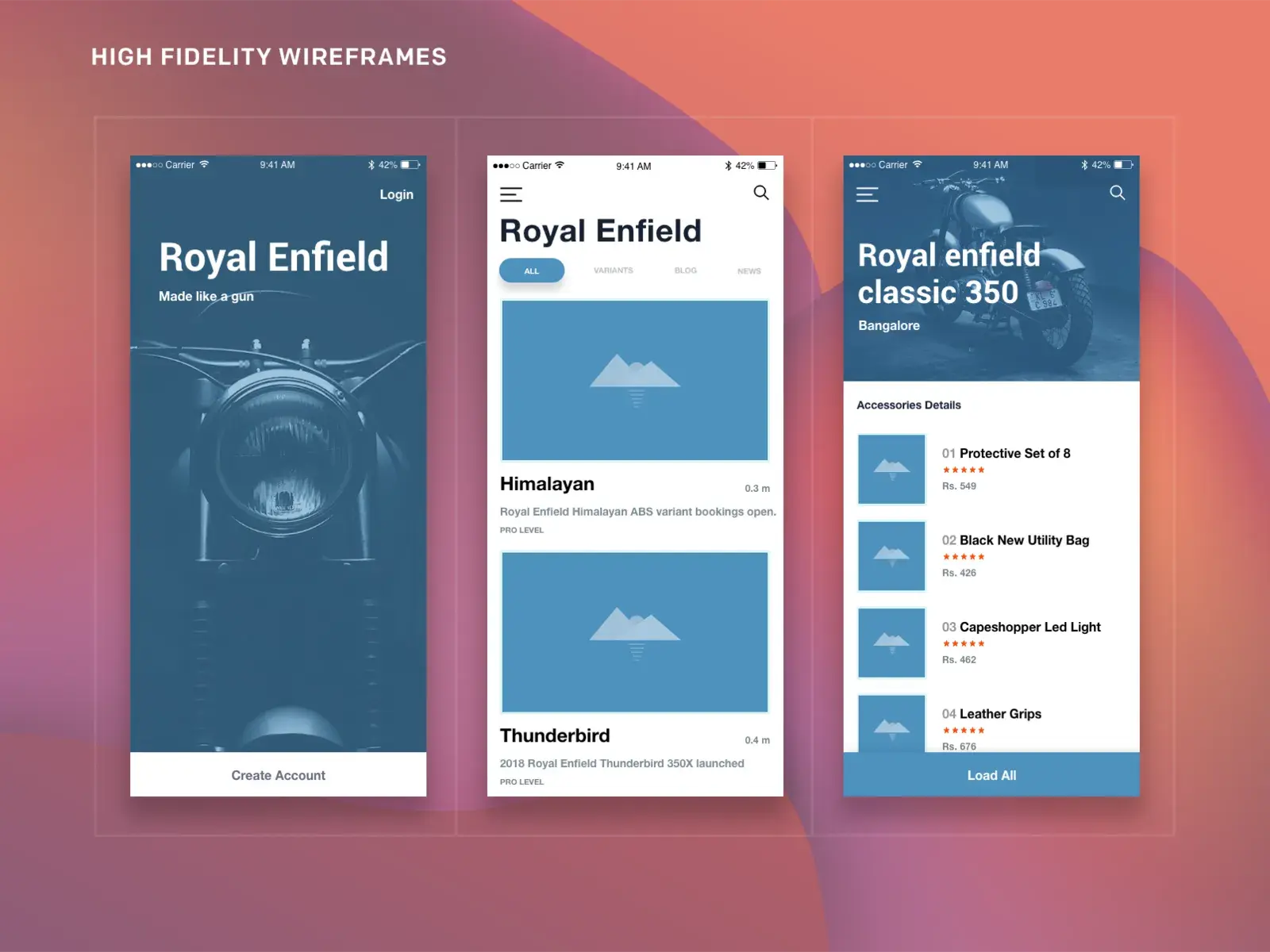
A Wireframe for Any Level of Detail
After reading through this post and everything I’ve shared, I’m sure you understand the importance of a wireframe and why you’ll need to make one if you’re working on a digital design project. In fact, you’ll need to make several.
Here’s my recommendation: Whenever possible, start with a low-fidelity wireframe and progress to more detailed, high-fidelity wireframes as you work collaboratively to design your final masterpiece. Although it might look like extra work when you begin, I’ve observed that having a wireframe at the beginning of a project saves you a ton of headaches down the road.
Editor's note: This post was originally published in June 2021 and has been updated for comprehensiveness.
.png?width=112&height=112&name=Image%20Hackathon%20%E2%80%93%20Vertical%20(50).png)
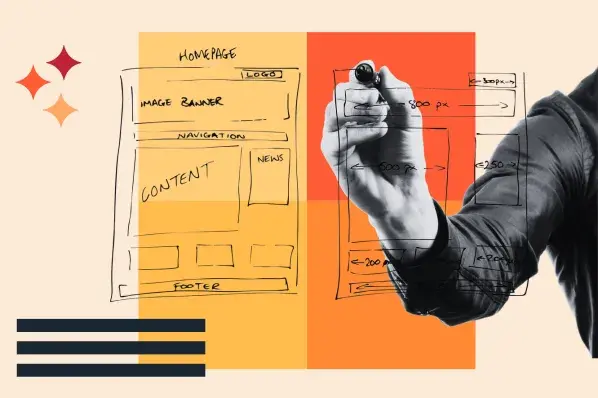
.png)
![How to create a website to sell products: 7 steps I used [+ expert tips]](https://53.fs1.hubspotusercontent-na1.net/hubfs/53/how-to-create-a-website-to-sell-products-1-20240909-6141294.webp)
![Website design proposal: A streamlined approach to pitching [+ templates]](https://53.fs1.hubspotusercontent-na1.net/hubfs/53/%5BUse%20(1)-Oct-23-2025-03-34-31-8363-PM.webp)




.png)
-2.png)

